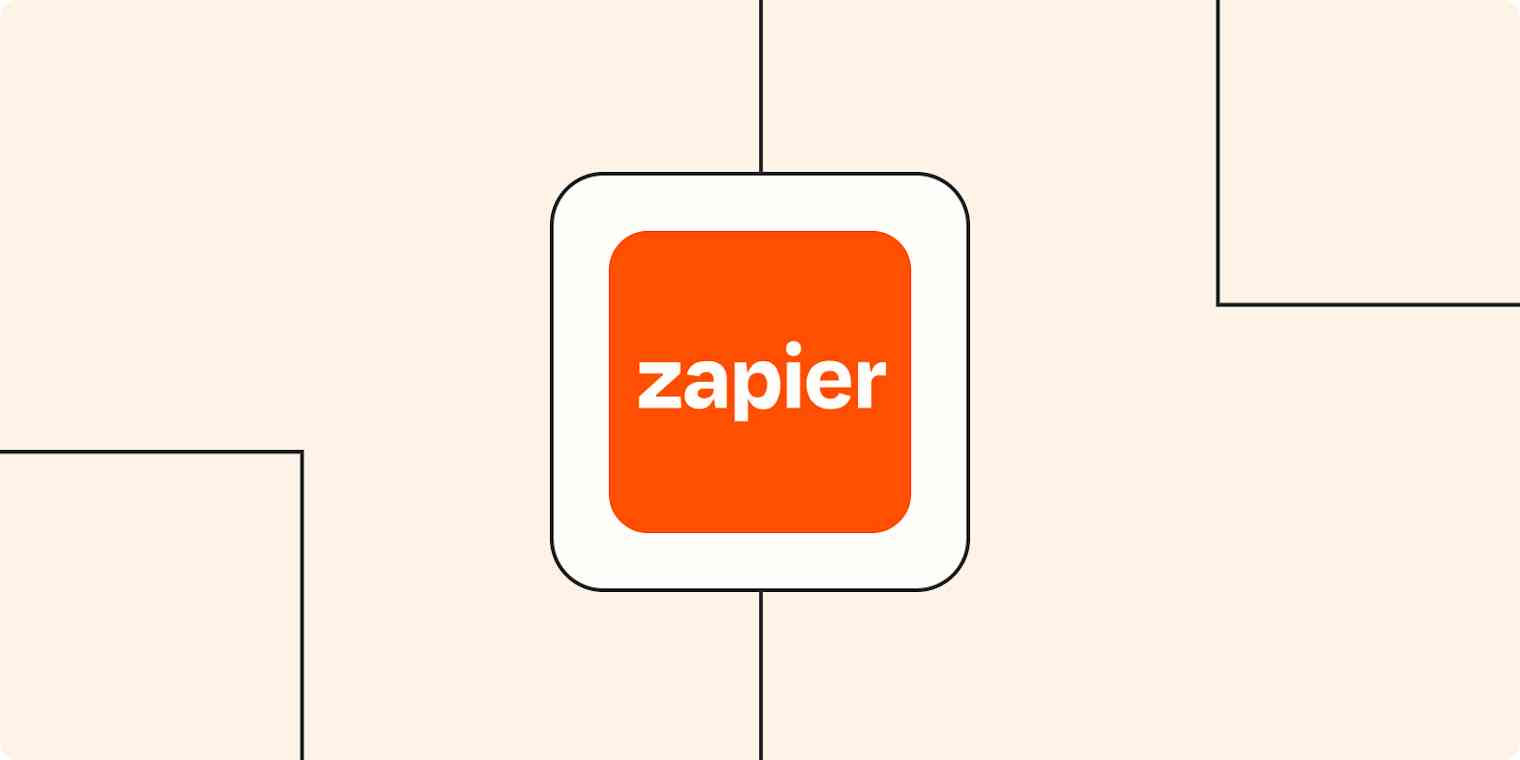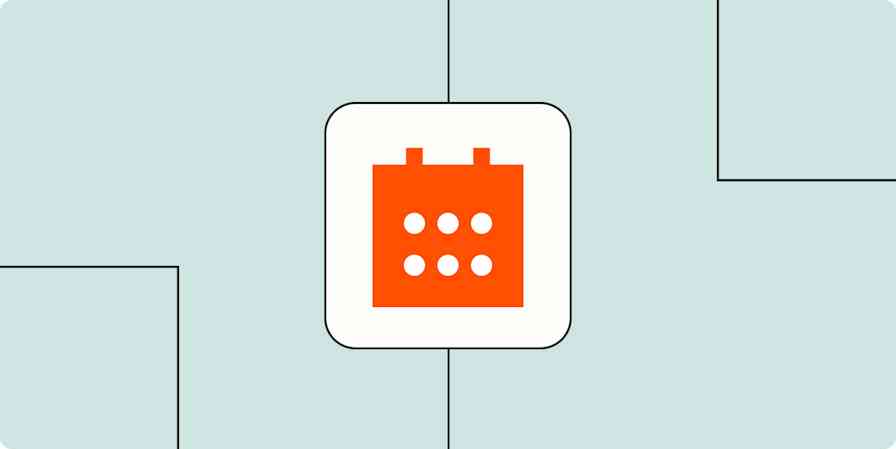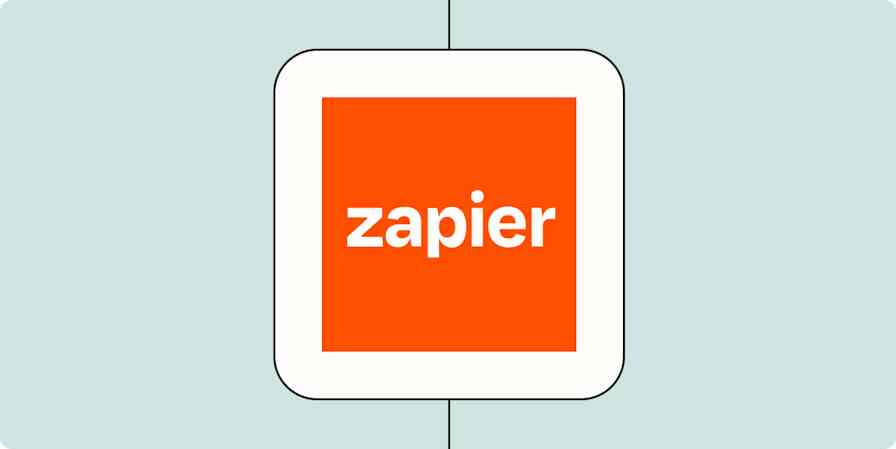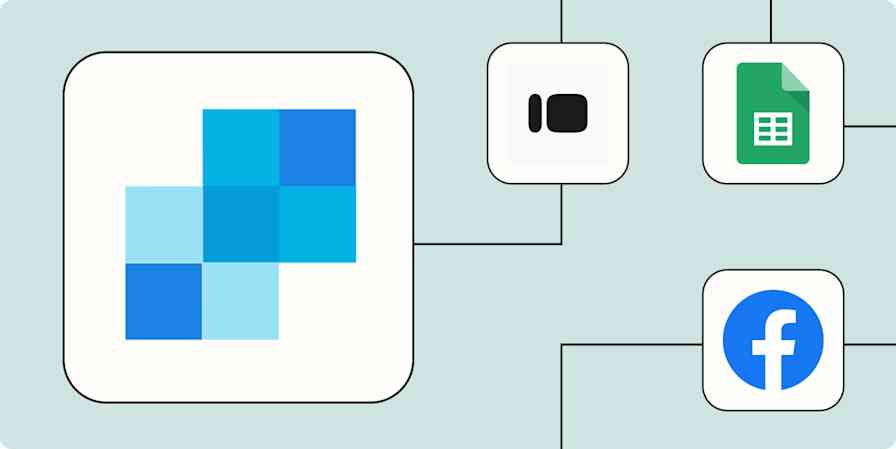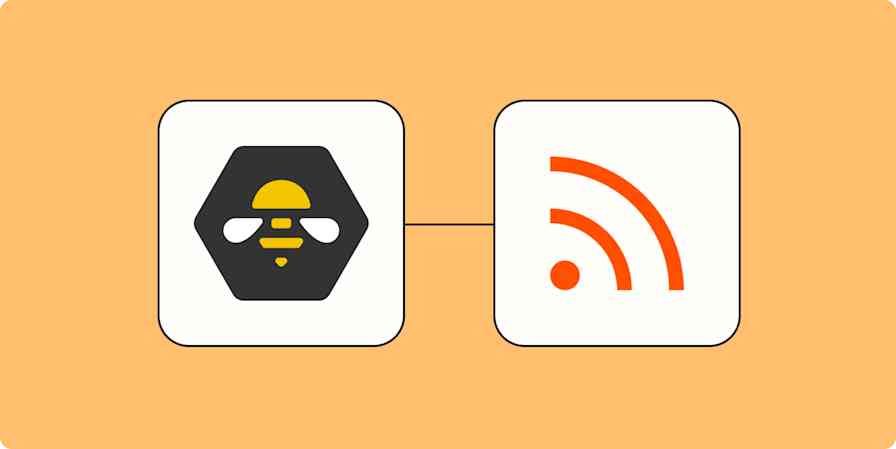What's your business's most valuable resource? Your product? Your customer list? Those are important, but we'd say it's your employees.
They bring their talent and insight to the table every day and put in effort to make the business succeed. And their most valuable resources are their time and attention. Why waste those on busywork when you can automate your business and free your employees to focus on what's important?
Busywork hides in unexpected places. The software, apps, and digital tools you use to run your business come with bloated inboxes and notification overload. Most employees interact with dozens of apps every week, and often that comes with new forms of busywork as they have to shuttle information between different apps.
Automation is a clear solution, taking repetitive tasks and seamlessly running them in the background.
This type of automation refers to a piece of software or code that responds to a trigger from one program by executing an action in another. Put simply, "When this happens, do that." You spend some time setting up the rules to govern these actions, and from then on, they run each time without you having to think about it.
This frees your team to focus on more engaging, productive work, but it can be a challenge to know where to begin the process.
Here, we're going to walk you through how to add automation to your business using Zapier, a software automation platform.
Zapier is the leader in workflow automation—integrating with 6,000+ apps from partners like Google, Salesforce, and Microsoft. Use interfaces, data tables, and logic to build secure, automated systems for your business-critical workflows across your organization's technology stack. Learn more.
Table of contents
You'll need a Zapier account to use the workflows in this piece. If you don't have an account yet, it's free to get started.
Decide where to add automation to your business
Before beginning the process, it's important to understand the results you want to see from automation. This helps you target your approach, so you're adding automation where it will be the most effective. Bain & Company's research shows an average cost reduction of 20% for companies employing automation, with "high-volume, rules-based processes" showing the most opportunity for labor reduction.
When thinking about how you are going to automate your business, look for opportunities to implement processes that will lighten your team's workload, spark creativity, and reduce costs.
Pinpoint complicated or time-consuming workflows. What tasks take up the majority of employees' time? Which tasks are repetitive or recurring? These are ideal candidates for automation. It's likely your employees will have a very good idea of what these tasks are, as they tend to be the most onerous and annoying.
Understand what apps are being used and how they talk to each other. Any place where a person acts as a bridge between software platforms is a great candidate for automation. There's no reason to have staff run interference for these apps: Let them communicate with each other directly.
Look at the ways people and departments communicate. Are there departments that need to communicate frequently or often access information from the same sources? Automation can make it easier to share and transfer knowledge.
Identify opportunities for innovation. Identify areas you want to see growth and creativity and encourage the teams working on those projects to create new and exciting tools with automation. You can use automation to synthesize and analyze information, spark ideas, or create entirely new tools when your existing apps are falling short of their potential.
A few places we recommend evaluating as you get started with automation:
Managing notifications with automation frees employees from distraction by eliminating unnecessary notifications and collecting important notifications in a single place.
Automation can help you with file management by backing up files, creating folders and documents from templates when a new project starts, or downloading and organizing email attachments as you go.
Task management—like adding items to to-do lists and keeping team members informed of progress on projects—is another easy place to add automation.
If you're not sure when to automate a task, start here. Then take a look at these 5 things you should automate today.
Ultimately, as employees reduce their stress levels, they will have a clearer mind and more energy for creative thought. A Zapier survey showed significantly more growth and resiliency in businesses using automation software moving into 2021, with employees reporting higher productivity, increased bandwidth for creative work, less stress, and higher job satisfaction.
Want to make it easier for your company to scale? Discover how to automate work across departments for better collaboration and faster growth.
Tailor your automation approach based on team needs
Once you have an idea of your goals and a sense of where automation will be the most helpful to your business, you can begin to create specific workflows for your teams. Every department has distinct needs and challenges and may use the same apps in completely different ways. Here are some ideas to help you adapt or develop Zaps to serve the specific needs of each team and execute them effectively.
Accounting and bookkeeping
More than any other department, accounting and bookkeeping require repetition and precision. A Gartner survey showed that 30% of a full-time accounting employee's work could be saved if automation were used to reduce avoidable rework. More accuracy in less time seems like an ideal to strive for.
In this accounting automation walkthrough, Kelly Goss and Rowan Van Tromp, two Zapier certified experts, both recommend beginning by diagramming your most common workflows to see which steps are repeated or especially laborious. Once you have a solid overview of your processes, set the groundwork for effective bookkeeping automation by starting with the accounting software your team is already using. From there, automate the information going in and out of this central hub.
Track and report expenses accurately
Receiving payments from clients, tracking team expenditures on company cards or bank accounts, and recording service provider fees are all easy to link directly into your software with Zaps—no need to wait for manual input. Once your information is quickly and accurately consolidated, another Zap can export that data to spreadsheets for easy reporting, giving you real-time data on your company's financials and eliminating the human labor from repetitive tasks such as batched expense reports.
Add new Expensify reports to a Google Sheets spreadsheet
Generate receipts in QuickBooks Online for new Stripe payments
Add new paid Shopify orders to Microsoft Excel rows
Improve your invoicing and eCommerce software
Another frequently repeated action is invoicing. Creating your own integrations with Zapier can give you more finesse than the often limited native integrations your apps offer. If you're using an eCommerce platform such as Shopify or Paypal, you'll be able to get more tailored information from them by creating your own automated workflow and even auto-generate thank you emails.
Generate receipts in QuickBooks Online for new Stripe payments
Add new QuickBooks Online invoices to Google Sheets spreadsheet rows
Import new clients into accounting software
Hotjar saved their finance team considerable time tracking client data by using Zaps to update their billing software directly from their CMS. They set up a Zap triggered by clients filling out a form in HubSpot to update that information to Google Sheets. Another Zap brought the information from that database to their accounting software, FreshBooks, to automatically create a new client in the system. This helped their remote team work together smoothly by ensuring they all had complete and accurate customer data.
Save new HubSpot form submissions to Google Sheets rows
Add new Google Sheets spreadsheet rows to FreshBooks as new clients
Send new form submissions in HubSpot to Google Sheets and create new clients in Freshbooks
Marketing
Marketing needs to be fast, responsive, and personalized. Automation can help marketing react to customer engagement quickly and keep valuable client data accessible and organized. Something as simple as receiving an instant, automated response from a site can make customers 42% more likely to follow up with a purchase—so that nimble, real-time reaction can make all the difference.
Learn more ways to automate your marketing by adding Zapier to your lead generation and management strategies, internal workflows, and social or event marketing.
Make lead ads work for you
The responsiveness automation enables can also make more sophisticated ad types—such as lead ads on Facebook or Instagram—accessible to businesses with fewer resources. Lead ads have higher conversion rates but are harder to set up due to the need to manually download the data they acquire. Setting up a few simple Zaps like the ones linked here enables you to retrieve, record, and respond to interactions with these ads quickly and effectively.
Add new leads in Facebook Lead Ads to Salesforce Essentials
Add or update ActiveCampaign contacts with new Facebook Lead Ads leads
Create contacts on Zoho CRM from new leads from Facebook Lead Ads
Learn more ways to use automation to improve your pay-per-click campaigns.
Streamline your social media marketing
If social media is central to your marketing strategy, you can automate sharing and cross-posting across multiple platforms, keeping your online presence up-to-date and unified. You can even set up automated monitoring of your social media channels, notifying you of brand mentions and keeping track of reviews.
Share your new Instagram posts to your Facebook page
Send new YouTube videos in a channel to a Facebook Page
Effective email marketing
Email remains a primary marketing channel for many companies, but it often requires multiple apps to manage. Subscribers may come from multiple channels, including live events, social media, sales, and website sign-ups. Automation can organize those contacts so you can target your marketing emails effectively.
Add new PayPal customers to ActiveCampaign as contacts
Support online and in-person events
Promote and share your event across multiple platforms by connecting them with automation. Register attendees, whether your event is digital or in person. With automation organizing your attendees' contact information, you can send them links to join digital events and automatically add them to your CRM afterward. If your event has a more complex schedule, like a conference, you can arrange automated notifications and communications of important information throughout the day.
Add new Eventbrite events to Facebook Pages as posts
Create LinkedIn company updates for new events in Eventbrite
Create event purchases in Facebook for new ticket purchases in Splash
Human Resources
A growing company means a busy HR team. With hiring, training, signing documents, and benefits management moving online, HR will find automation especially beneficial.
Organize your recruitment
HR automation can begin at the recruitment stage. You can use a program such as Workable to collect applications and resumes and then use Zaps to instantly alert your recruitment team to new leads, send confirmation emails to applicants, and schedule interviews.
Add new Zoho Recruit interviews as events on Google Calendar
Create Workable Candidates from a Typeform Job Application Form
Send a Confirmation Email to New Workable Applicants
Here are five ways recruiters can start automating their work.
Onboard efficiently and securely
Once a candidate is ready to onboard, HR can seamlessly automate the process of getting important forms digitally signed, confirming they have been successfully received, and then filing them securely. While this might not seem like an obvious area for data management, HR is responsible for a large quantity of sensitive employee data, which is vital to keep private and up-to-date. Automation reduces the number of people who need to interact with that data while keeping it organized. Once new employees are onboarded, automate the process of scheduling, training, and requesting access to the new apps, getting your new staff up to speed faster.
Request Dropbox Sign signatures with new Google Sheets rows
Send Dropbox Sign signature requests from your Wufoo form
Automate your business's vacation requests
If there are ways your staff needs regular support that shouldn't fall through the cracks, automate the process. MeisterLabs realized time off requests were cluttering staff inboxes and were not as organized as they should be. They moved the request process to Google Forms and then automated a Slack notification for their manager to approve or deny in a timely manner. Another automation would then update the shared Google Calendar and a document in Google Sheets, resulting in seamlessly coordinated vacation times.
Send a Slack message to a Private Channel from new Google Sheets Rows
Update rows in Google Sheets when new messages post in private Slack channels
Update Google Sheets rows with new, specific messages in Slack channels
Send emails via Gmail when Google Sheets rows are updated
Reporting and analytics
If there is anywhere that automation excels, it's compiling data thoroughly and accurately. Building and maintaining a database can be done far more effectively with automation than manually, with the McKinsey Global Institute estimating that "more than 81% of predictable physical work, 69% of data processing, and 64% of data-collection activities could feasibly be automated." Standardize your forms, track data, and make your spreadsheets work for you with automation. With that work out of the way, your team will be free to handle the more sophisticated interpretation and communication they are skilled at.
When you've got important data to analyze, adding automation can help you stay on top of changes and prepare for important reports. Learn four automated workflows you can create for your business analytics software.
Standardize forms to get better data
Analyzing data accurately starts with how you collect it. Making sure forms are looking for the right information and then gathering it in a consistent, repeatable manner makes your data that much more valuable. Customer.io uses a lot of customer data to drive their marketing analytics. They use Zapier to automatically standardize the formatting and then distribute forms with webhooks, making sure their records are clean and useful with minimal strain on their small team.
Create or update customers in Customer.io from FormKeep submissions
Create leads on Close for new submissions on FormKeep
Format FormKeep responses and send data through Webhooks by Zapier
Make yourself a database
Next, set up Zaps to compile that data from multiple spreadsheets, sources, and apps and set up an automated system to monitor the growth of that database for you. With a solid database in place, you can then use Zapier to help your team analyze and learn from that information. There are Zaps that can assist you in analyzing your website traffic and performance, looking into the effectiveness of your phone support, assessing your sales strategies by connecting their tools to Google Analytics and Zoho Analytics, and even gaining deeper insight into your team's performance.
Create Airtable records from new Google Forms responses
Add new Facebook Lead Ads respondents to your MySQL database
Add new SQL Server rows to a Google Sheets spreadsheet
Automate your basic analysis
IWT (I Will Teach You To Be Rich) turned to automation when they became frustrated with the slow and laborious manual process they'd been using. Their content marketing approach needed to be responsive and data-informed, so by setting up this automated analysis, their team could spend their energy learning from the data, not just collecting it.
Add new Keap Max Classic invoices as rows to a PostgreSQL table
IT and tech support
IT is an area where the benefits of automated monitoring and notifications will be especially useful. Automation can be built into your website management from the beginning, for instance, by integrating Zapier functions and Webflow to track support needs and react to customer interactions.
Support your site security
Automation can also ensure your company's site stays up-to-date and secure by scheduling automatic backup reminders to ensure your data is backed up regularly. To proactively look for potential security breaches, you can set up automated monitoring. Connect a security app like Intruder to your notifications to make sure security issues are followed up on quickly. Create automated systems to secure both internal company passwords and necessary client passwords. Then a Zap can be set up to provide secure access to those passwords when needed.
Turn new Wordpress users into LastPass team members
Communicate and respond to requests
While an IT team can build automation into their technical work in many ways, they'll also find that it's helpful to automate the systems that support that work. This is an area where the collaborative tools mentioned earlier can be especially beneficial, as IT's workflow often involves responding to requests from other teams.
When the founder of DevsData realized how much time everyone on his team was spending filtering through their inboxes and fielding support requests, he worked to set up automated inbox sorting and prioritizing using Google Sheets. From there, scheduled tasks could be automatically added to their calendars. This small adjustment to his team's workday made a huge difference in their ability to focus and manage time.
Send emails via Gmail when Google Sheets rows are updated
Save new attachments from labeled emails in Gmail to Google Drive
Add files to Dropbox from new labeled messages on Gmail
Customer support and client success
Automation also helps the team that works most closely with your customers and clients—your support and success employees. Easily create tickets, stay on top of issues, and keep your knowledge base up-to-date by using customer support automation. Even better, adding automation makes things better for your customers.
Create Zendesk tickets from new Squarespace form responses
Get Slack notifications for new Help Scout conversations
Empower your teams to implement the automation they need
Ultimately, automation works best when it is driven by the needs of the people using it. Your staff will understand where the pain points are and what they spend the most time doing, and they'll have a vision for where things can grow and improve. Involving them in the automation process from the ground up will help the automation serve the needs of your business most effectively.
Automation software has made it possible for anyone to set up sophisticated workflows, not just those with computer science degrees. Instead of expensive programmers creating top-down systems, automation can now be executed directly by the people who will be using it. This capacity for personalization makes this type of automation nimble and responsive to your team's specific needs. Let your team experiment.
Automation can be utilized across departments but also at each level: company-wide, within teams, and by individuals in their personal workflow management. Individuals can access Zapier's Learning Center and blog for inspiration on what automations to set up and guides for how to execute them. The more thoroughly your teams understand how they can use this tool, the better, more actionable suggestions they will be able to make for larger-scale automation initiatives.
While automation might seem like a technological tool, it's actually about the people using it. When human creativity is freed from mindless and repetitive busywork, your company will suddenly have a lot more energy for innovation, collaboration, and growth.
The possibilities for implementing automation in the workplace can be overwhelming, but focusing on empowering and unburdening your workforce will steer your efforts to where they will make the most dramatic impact. What can your employees create now that their busywork is taken care of? What can they imagine with a clear inbox and access to organized data? Your company has the space to grow and flourish as your workflows seamlessly run themselves.
